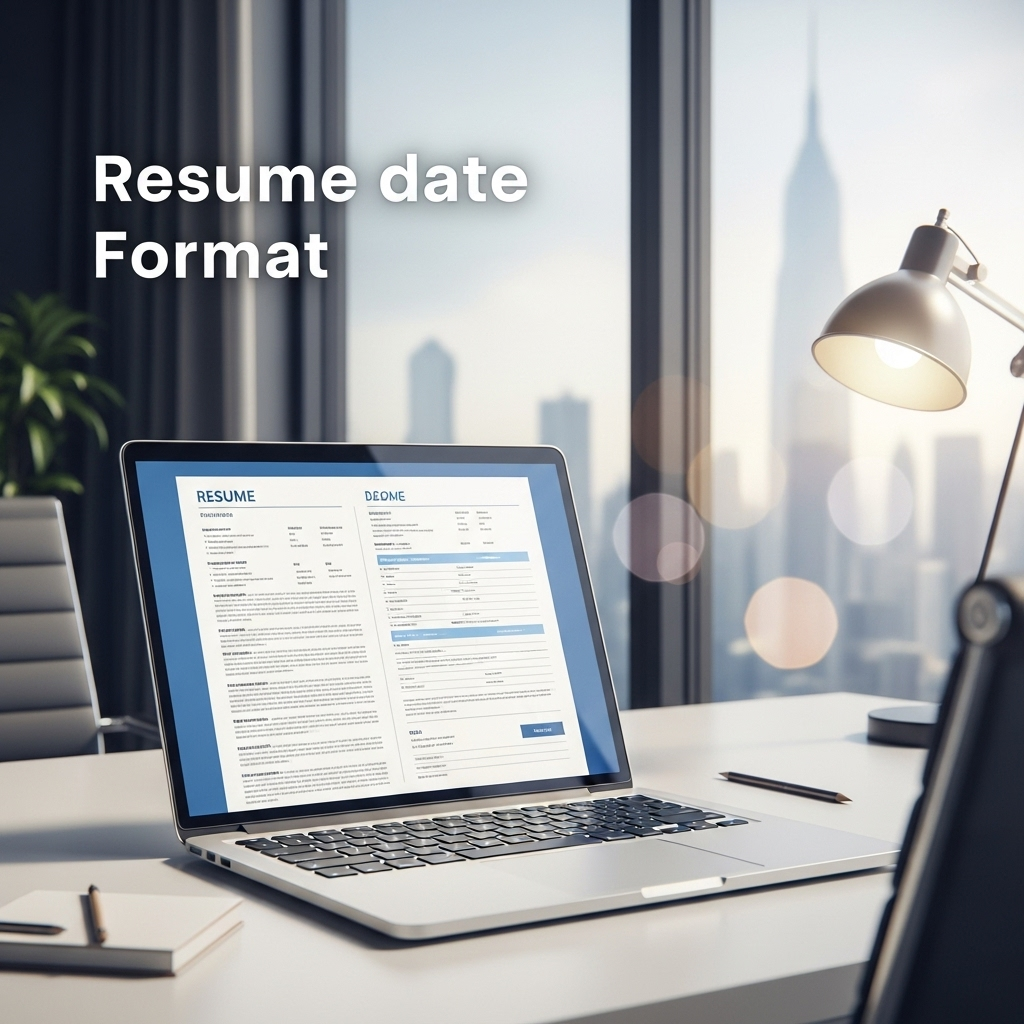Resume Date Format: Guide to Get Past ATS in 2025

The Ultimate Guide to Resume Date Format in 2025
Introduction
You've perfected your resume's content, but now you're stuck on a seemingly minor detail: the date format. Can something so small really impact your job search? The answer is a resounding yes. In an era where over 98% of Fortune 500 companies use Applicant Tracking Systems (ATS) to filter candidates, the formatting of your resume is just as critical as its content.
Many guides create anxiety around ATS, making you feel like you need a secret decoder ring to get noticed. This guide is different. We'll provide a clear, no-nonsense approach to resume date formatting, empowering you with the knowledge to create a professional, readable, and ATS-friendly resume that gets you in front of human recruiters.
Why Your Resume Date Format Matters
A consistent and correct date format is crucial for two main audiences:
- Human Recruiters: Hiring managers spend an average of 7 seconds on a resume. A clean, predictable format allows them to quickly understand your career timeline without getting distracted or confused.
- Applicant Tracking Systems (ATS): These systems parse your resume and extract key information, including your work history. An unconventional or inconsistent date format can cause the ATS to misread your experience, potentially leading to an unfair rejection before a human ever sees your application.
The Best Resume Date Formats: Keep It Simple
When it comes to resume dates, clarity and consistency are paramount. While there are several ways to write dates, only a few are universally accepted and recommended.
Here are the top formats:
- The Gold Standard (Recommended):
Month Year(e.g., October 2021 - June 2024) - The Numerical Equivalent:
MM/YYYY(e.g., 10/2021 - 06/2024)
While you might see other formats, sticking to these two is your safest bet. Using only the year (e.g., 2021-2024) is generally discouraged as it can look like you are trying to hide short-term employment.
Comparison of Top Resume Date Formats
To make the choice easier, here is a direct comparison:
| Format | Example | Pros | Cons |
|---|---|---|---|
| Month Year | Oct 2021 - Jun 2024 | Universally readable, professional, and preferred by recruiters. | Takes up slightly more space than the numerical format. |
| MM/YYYY | 10/2021 - 06/2024 | Space-efficient and perfectly ATS-friendly. | Can be slightly less readable for humans at a quick glance. |
Our Verdict: Use the Month Year format. It strikes the perfect balance between human readability and machine compatibility.
How to Handle Special Cases (With Step-by-Step Examples)
Your career path isn't always linear. Here’s how to format dates for common, tricky situations.
1. For a Job You Currently Hold
Use "Present" as the end date. This is the standard and universally understood convention.
- Senior Analyst, Example Corp, New York, NY, October 2022 - Present
2. For Short-Term or Contract Roles
Be transparent. Listing the months shows the precise duration and professionalism.
- Freelance Consultant, Self-Employed, June 2023 - September 2023
3. For Multiple Positions at the Same Company
List the company once, then indent each role with its specific date range. This shows clear progression.
- Big Company Inc., San Francisco, CA
- Senior Manager, January 2022 - Present
- Manager, June 2020 - January 2022
"As a recruiter, I can tell you that a clean, consistent resume format makes a huge difference. When I see a clear timeline with dates formatted like 'Month Year', I can focus on the candidate's achievements, not on deciphering their work history." - Senior Tech Recruiter
Your Resume Date Format Checklist
Use this bulleted list to double-check your resume before you hit "send."
- [ ] Use the
Month Yearformat (e.g., Jan 2023 - May 2024). - [ ] Be 100% consistent across all sections (Work Experience, Education, Certifications).
- [ ] Use "Present" for your current role (e.g., Oct 2022 - Present).
- [ ] Right-align your dates for a clean, organized look.
- [ ] Proofread! A typo in a date can be a red flag for a lack of attention to detail.
Optimizing your date format is a great first step. To ensure your entire resume is ready to beat the ATS and impress recruiters, consider using a tool like JobSeekerTools. Our platform analyzes your resume against specific job descriptions, helping you tailor your content for every application.
Conclusion
Don't let a simple formatting error derail your job search. By choosing a professional, consistent resume date format, you make your resume more readable for recruiters and more compatible with the ATS software that stands between you and your next interview. Stick to the "Month Year" format, handle special cases with clarity, and you'll present a polished, professional document that lets your skills and experience shine.
Frequently Asked Questions
Should I include the exact day on my resume dates?
No, it's not necessary and adds clutter. The month and year provide sufficient detail for your work history.
How do I format dates for a job I started and left in the same year?
Use the same Month Year format. For example: Project Manager, June 2023 - November 2023. This is perfectly acceptable and common for project-based or short-term roles.
Is it okay to just use years on my resume for very old jobs?
While consistency is key, it is generally acceptable to use only years for jobs held more than 10-15 years ago, especially if your recent experience is more relevant. However, for all recent and relevant roles, stick to the Month Year format.